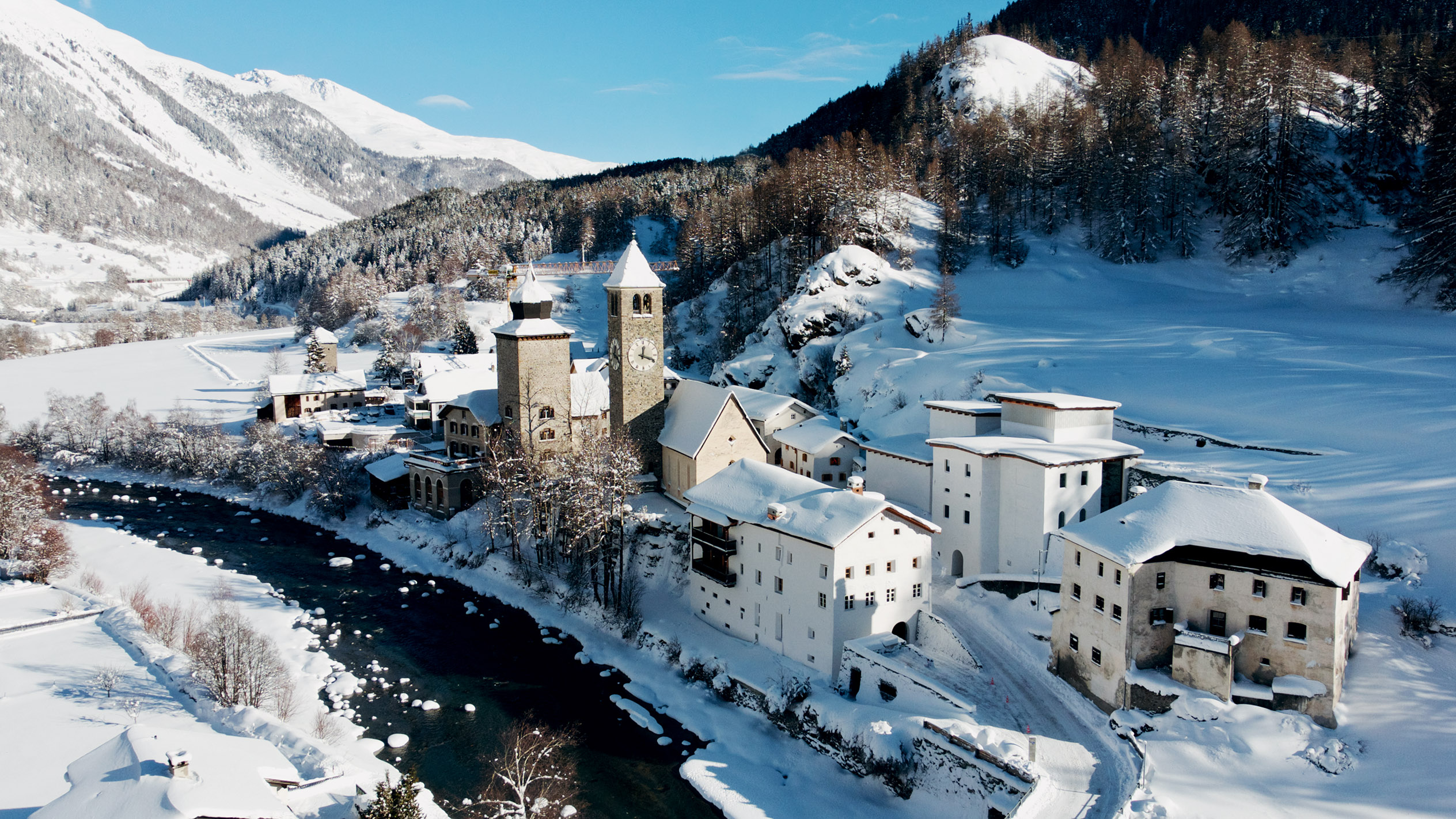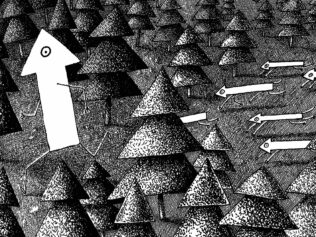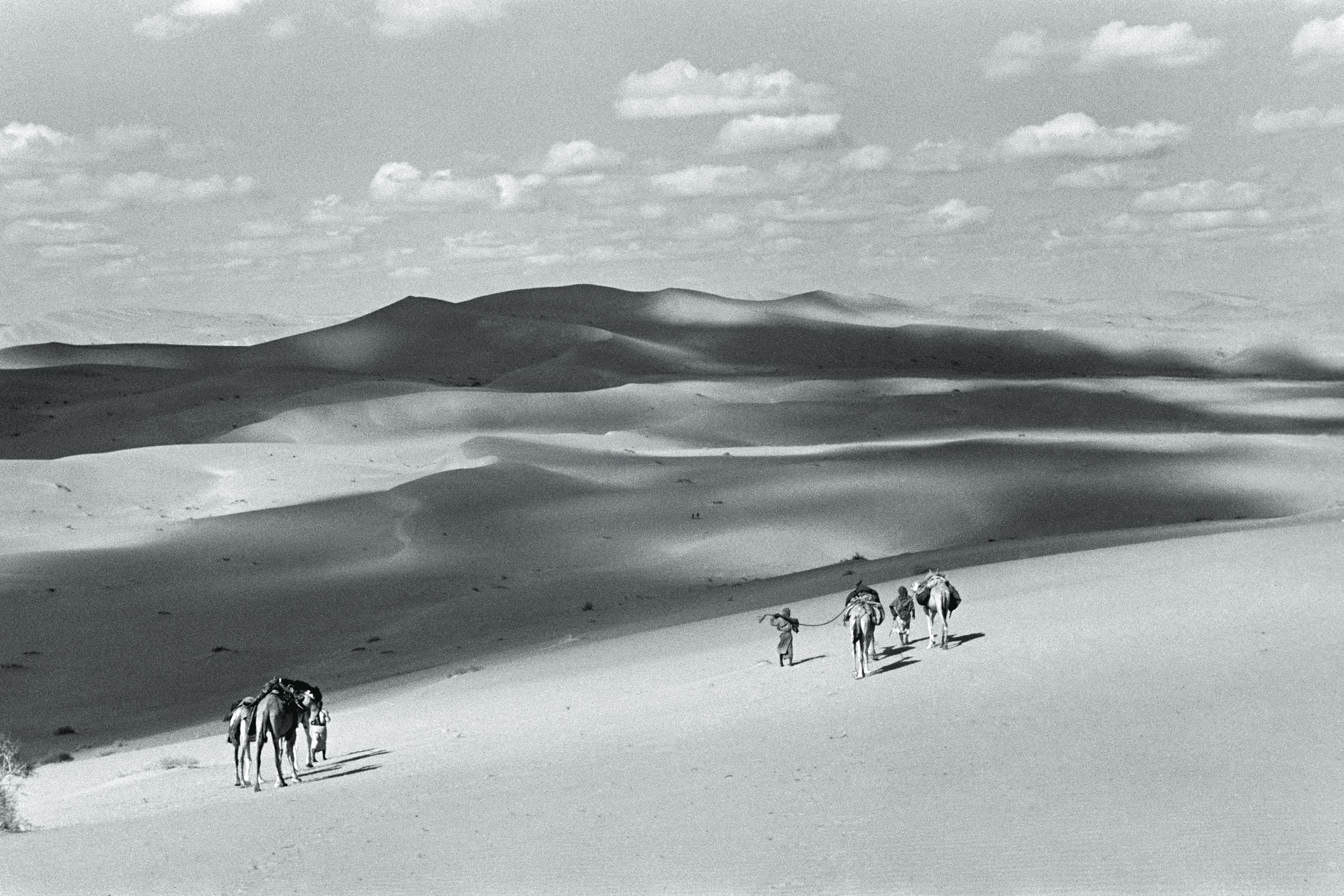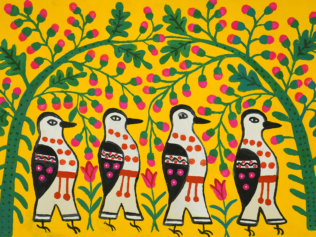
Grażyna Kulczyk could have opened her museum just about anywhere. Why did she choose the Swiss Alps?
At the turn of 2019, the Polish art world was, intellectually, far away from home. In an Alpine pass village, Grażyna Kulczyk launched her private Muzeum Susch. What is this institution? Is it a sign of the success of Polish culture, the representative of which has reached the highest Swiss altitudes? Is it an expression of Poland’s biggest art collector’s disillusionment, who, having turned her back on the general public, headed for the mountains, a place where only true art enthusiasts will venture? Should we view Susch as the whim of a billionaire, or rather the fulfilment of a lifelong dream of a connoisseur, who knows not only art, but also the art world? And why did Kulczyk, out of all places, fancy the Alps?
***
Since it was too difficult to sit and wait for answers to these questions, we travelled to the Muzeum Susch in December 2018, before its official opening. The ruse set up by Kulczyk is foolproof – the curious mind inevitably falls into the snare, lured by the promise of rich rewards. In the case of Susch, the extreme parameters of Kulczyk’s exercise provide an extra incentive. The protagonist of this story was, according to Wprost magazine, the third richest Polish woman in 2018 (her daughter took the top spot). She has a well-known last name. She is the biggest art collector and patron in Poland. She founded the museum in a place located remarkably high above sea level (1438m). The village she has chosen for the headquarters is exceptionally small (only 200 residents). The country where the village is located is the best country in the entire world to live in (at least according to the Best Countries ranking published by US News & World Report). The building that Kulczyk has adapted to house the museum is very old (12th century). The redesign must have been extremely expensive. Specific amounts remain the billionaire’s secret – all the better for the imagination, allowing us to speculate on the alleged expenses without any hindrance. On top of all this there is of course the art, which in Susch also reaches the highest levels of the art market and discourse.
Kulczyk does not distance herself from Polish art, but she did not open a museum in the Swiss Alps to impress her compatriots. In Poland, however, her project is being experienced in a particular way. Peripheral cultures tend to treat compatriots that are active on the international arena as if they were players of the national team. Keeping track of ‘our’ performance on the world stage has one advantage: every possible development is good. For example, Kulczyk is the first Polish collector playing for such high stakes in the international art world. In the face of such audacity, it remains unclear whether we should wish her all the best, or hope that she fails miserably. The collector’s success is a source of pride, but her failure would not be unwelcome either. I think I speak for all Poles when I say we’d enjoy a spot of schadenfreude should the museum turn out to be quite pretentious; if Kulczyk ultimately embarrasses herself in front of the Swiss collectors as a nouveau riche provincial who tried just a little too hard to join their ranks.
Ever since she envisioned her ‘offspring’ in 2015, Kulczyk has been working on the museum for three intensive years. In the Middle Ages, the monastery buildings housed a shelter for pilgrims travelling to Santiago de Compostela, and a brewery run by monks. Since the museum’s opening, a lot has been written about what the collector achieved with the help of Chasper Schmidlin and Lukas Voellmy, two young architects from Zürich. Not particularly well known before Susch, the pair have now – thanks to Kulczyk’s investment – become quite famous in their own right. In the press, there were reports of the 9000 tonnes of rock excavated from below the monastery in order to enlarge its cubic capacity. Others have written about the perfect equilibrium between the construction of a hi-tech vehicle for the display of art and the preservation of traditional Engadin-style architecture, medieval ceiling beams, thick walls, with the raw yet human imperfections of its detailing. There were also accounts of the underground tunnels and passages hollowed in the Alpine mountain; caves, limestone residue and underground streams humming in the building, making the museum an event of not only architectural, but also geological character. There were reports about regional craftsmen working in Susch, in keeping with Alpine traditions. Finally, there were stories about the art: the incredible sculpture by Monika Sosnowska placed in the former ice storage tower, the atomic bomb sculpted by Joanna Rajkowska from painkillers, Mirosław Bałka’s sculpture reflecting the entire grotto, and Piotr Uklański’s Real Nazis lurking in one of the exhibition spaces.
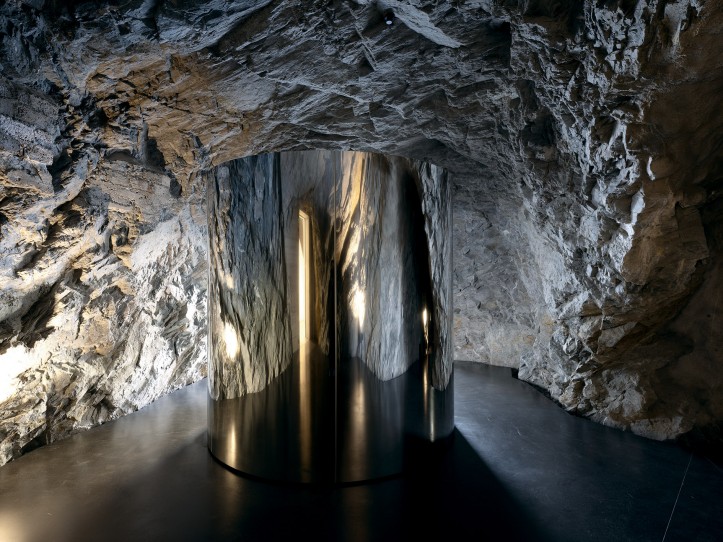
This is not the place to swoon, yet again, over the Muzeum Susch’s appeal that is – at any rate – hardly accessible, both geographically and economically. Let’s just say that we’ll have to relish in schadenfreude on another occasion. After all, Kulczyk has succeeded. Instead, let’s focus on the context in which she built the museum. Kulczyk could have established it just about anywhere, but she decided to open it in the shadow of the magnificent Alps, as they say.
***
In January 2019, Oliver Wainwright of The Guardian reported from the Alpine village. He praised the art, but even more so the idea itself, noting that in the era of corporate architecture, it is easy to forget that buildings can be executed as well as the one in Susch (clearly, the museum enjoys good press not only in Poland). Wainwright’s original contribution to the poetics of enthusiastic relations with Susch was comparing it to a vintage Bond villain’s secret lair: an inaccessible mountain pass, an old monastery discreetly crammed with advanced technologies, grottos hollowed in the solid rock. This is yet another compliment, but indeed the museum can be imagined as a kind of base in which an eccentric billionaire works out the details of some elaborate scheme.
Bond villains, such as Ernst Stavro Blofeld (who had the best secret lair!), would seek refuge in such fantastic hideouts in order to plan and prepare for taking over the world. Wouldn’t the Alps be the perfect base for coordinating such an operation? Or maybe they already are? When you are in Susch – among the snow that lies amid the mountain peaks for at least six months per year – it is easy to get the impression that Kulczyk has built a museum at the end of the world. Yet this is just an illusion. The resort of Davos, which hosts the World Economic Forum every year, is less than an hour’s drive away. Slowly, it sounds increasingly like a Bond story. Some see the Forum as the actual, though informal, world government, or at least a global senate. In Davos, the representatives of corporations and financial institutions meet politicians from all over the globe: from the capitals of the developed world, the rich oil emirates, and failed African states. Besides, in the canton of Grisons, the presence of influential people is not limited to Davos; the Swiss mountains are crowded with celebrities and millionaires. Kulczyk discovered the brewery and monastery in Susch by chance, yet this was not entirely accidental – she lives in Engadin. Only seemingly does the village lie on the outskirts, just as the Swiss mountains are only seemingly a true wilderness. In fact, the colonization of the Alps – by literature, art, tourism, sport, business and privileged individuals – has been going on for a quarter of a millennium, and began with the advent of modernity.
Previously, the Alps, like other mountains, were treated as a natural obstacle rather than an attraction. It is difficult to cross the high mountains; it is cold, and even more difficult to cultivate anything. Traditionally, life was rather poor in the mountains. If our ancestors had been given the right opportunities and a free hand, they would have probably levelled them to the ground. However, modern people see the mountains in a different light. They are fascinating, because they are the polar opposite of our urban, overcrowded and artificial modern environments. Wild, high and deserted, they are pure nature squared. Among the European mountains, the Alps are the best, because they are the highest and are located in the middle of the continent. Rousseau was one of the first to notice them, promoting the alpine landscape in Julie, or the New Heloise (1761), the bestseller of the dawn of modernity. Other poets and writers followed in his footsteps, and soon the Alps rose from a geological fact to a literary motif. After all, Davos is not only a place for economic forums, but also the backdrop of The Magic Mountain. Long before Thomas Mann, however, there were the Romantics, led by Byron and Mary Shelley, who, of course, located Frankenstein’s key events in the shadow of the majestic Swiss peaks. Romantic Poles weren’t immune to the call of the mountains either. Before they discovered Poland’s Tatra Mountains at the turn of the 19th and 20th centuries, they travelled to the Alps. The young Juliusz Słowacki wrote Kordian in Switzerland, and had his hero deliver the key monologue atop Mont Blanc.
In the early 18th century, the peak remained unclaimed. Nobody climbed it, because what would be the purpose in that? Of course, this sentiment didn’t last long. In the second half of the century, Horace-Bénédict de Saussure – a man of the new epoch; a palaeontologist, botanist, physicist, geologist and alpinist avant la lettre – came to the conclusion that it was necessary to ascend this peak. He funded a prize for whichever daredevil could manage the task. In 1786, the Swiss highlander Jacques Balmat and the French doctor Michel-Gabriel Paccard claimed the prize. Encouraged by their success, Saussure ascended the highest mountain in Europe one year later. In 1818, the 12th man on the peak of Mont Blanc was a Pole, the proto-romantic poet Antoni Malczewski. One decade earlier, the mountaineer Marie Paradis was the first woman to ever climb so high. Climbing Mont Blanc became popular, of course in the exclusive sense of the word – such dangerous expeditions remained a pastime for the privileged classes. The 19th-century mountaineering elite may have had technically poor equipment, but they also had the highest lifestyle standards. The 1838 expedition (including the second woman in the history of conquering Mont Blanc, Henriette d’Angeville) carried a cask of good white wine and 18 bottles of red to the peak.
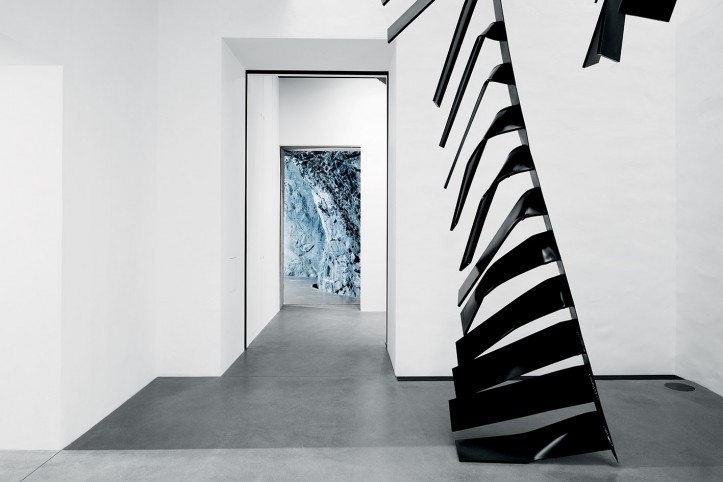
Celebrating the Alps as the highest form of European nature in the field of mountaineering was laudable, but rather extreme. Therefore, the 19th-century theories of vigour and hygiene provided new ways of consuming the mountains. The Alps were not only sublime, but also clean and healthy. Building on the discourse of hygiene and well-being, the health resort business boom began. The first one was Sokołowsko (Görbersdorf) in Lower Silesia, founded by Dr Hermann Brehmer, who is considered to be the inventor of the modern mountain resort. The effects of his work served as the model for Davos, and later other centres. This is yet another privilege of those who have reached the top of the social ladder – from its last rung you can climb even higher, up the Alpine rows, where the best air in Europe is sold.
A concept even fresher than air is sport. Skis have been around in Europe since Neolithic times, but they were not discovered as an entertainment and leisure vehicle until 1878, when the Norwegians presented traditional skis at the World Exhibition in Paris. The French mountaineer Henri Duhamel immediately bought several pairs and went to try them out in the Alps. Two decades later, writing from Davos, Arthur Conan Doyle reported that the European elite had become overcome by skiing madness. Thanks to the skiing boom (which continues to this day) the Swiss sell not only air, but also snow – resources that were never lacking in these parts, but, before the previous century, had never been commercialized.
The Alps have never been easily accessible. The history of the last 250 years of the region is a story of how its physical inaccessibility has been turned into social exclusivity. Modern culture has played the model role of gentrifier in this transformation. Is it surprising, then, that there are few places where the exclusive character of contemporary art can be seen as clearly as here, against the background of the Alpine peaks? And is it surprising that the biggest Polish art collector has opened a museum in an Alpine village rather than in one of the European cities overrun by Ryanair tourists? Small as it is, Switzerland is a superpower within the art world. It has wealthy galleries, prestigious institutions, an army of influential curators and collectors, and the continent’s most important art fair taking place annually in Basel. What about Muzeum Susch? It is easy to buy into the illusion that it is the perfect place to hide away in and enjoy art, far from the hustle and bustle of the world. However, people don’t go to Engadin to escape the art world; Engadin is the art world. In St. Moritz alone (three quarters of an hour by car from Susch) there are 13 galleries, including one opened in December 2018 by Hauser & Wirth, the giant of the global art trade with headquarters in Zurich.
The exclusive resort of St. Moritz has 5000 inhabitants. Per capita, its number of galleries is higher than Berlin’s. Naturally, this amount of contemporary art in St. Moritz is not addressed to highlanders, but rather collectors belonging to the 1% who visit the Swiss Alps, or those who, like Kulczyk, reside there permanently. The exclusive Kirchner Museum operates in Davos. In S-chanf, a settlement not much larger than the nearby Susch, a barn was converted into a branch of Basel’s prestigious Von Bartha Gallery. Just behind S-chanf, in Zuoz (home to 1200 souls), another art world tycoon, Monica de Cardenas, opened a branch of her Milan gallery. Located in the same town, Hotel Castell houses works of such contemporary art moguls as James Turrell, Carsten Höller, Martin Kippenberger, Erwin Wurm and Fischli & Weiss. For more than a decade, influential curators, collectors and critics have been meeting at the annual Engadin Art Talks in Zuoz to discuss the present and future of art. Among the initiators of these gatherings are Bice Curiger, Hans-Ulrich Obrist and Daniel Baumann – all curators who are prominent in the art world, and Swiss to boot. Speaking of the Engadin Art Talks, it is hard not to think of the event as an artistic counterpart to the Davos summit…
***
By nature, man is a two-faced creature. Could art, the product of man, be any different? The democratic face of art can be seen in metropolitan institutions stormed by the public, such as Tate Modern, where it is easier to see the backs of other tourists than any works of art. Museum education departments are falling over backwards to bring art closer to the so-called ordinary public, and there is no shortage of artists who are involved, and who attack capitalism and stigmatize global and local inequalities. And yet, the public is politely requested not to touch the (anti-capitalist) exhibits unless they buy them. Art’s second, exclusive face is that of a field linked more closely with the economy of the 1% than any other part of contemporary culture. Musicians, writers and filmmakers can sell their works to audiences belonging to the 99%. The customers buying from the artists are individuals; collectors forming the economic backbone of the art world.
That term ‘1%’ does not fit well with the phrase ‘mass audience’. As long as the exclusive façade of art hides in the discreet shadows, it seems to be the truer of its two faces. Late capitalism has not yet invented a better medium for communicating social status and distinction than art. In order to engage with the art world, one needs not only money, but also knowledge and cultural competencies. That is why it is a misunderstanding to even wonder why Kulczyk established her museum so high above the sea level, in such economically-inaccessible mountains, which only a select few can reach. The Muzeum Susch is located exactly where it should be – that is, in a place where it is more real than it could be anywhere else.
Translated by Joanna Figiel


